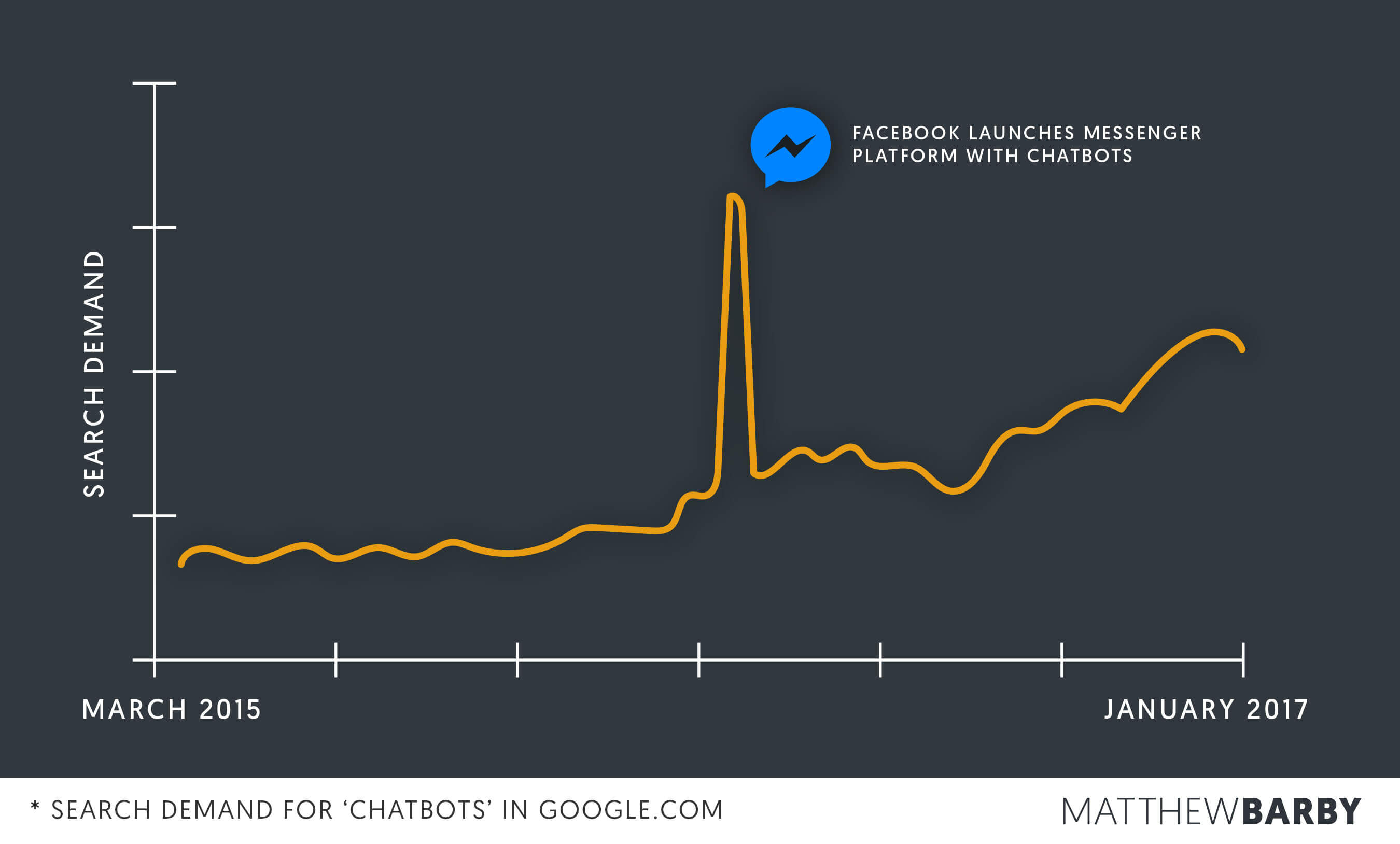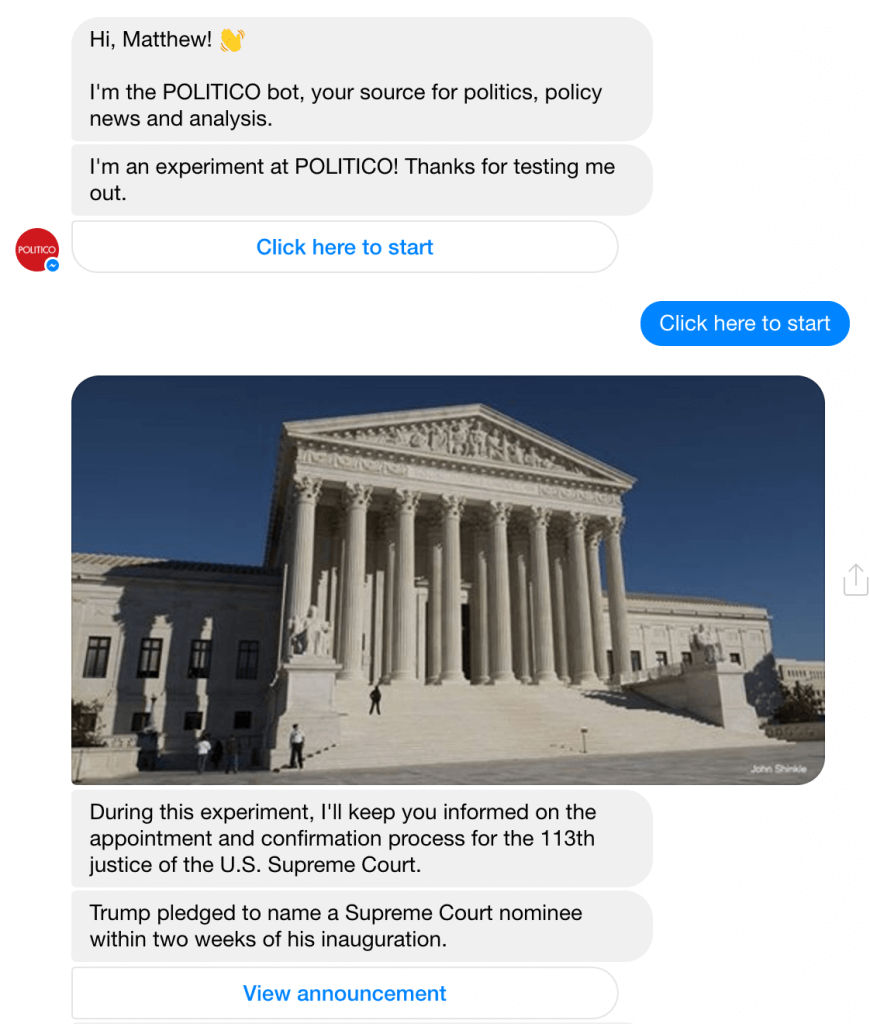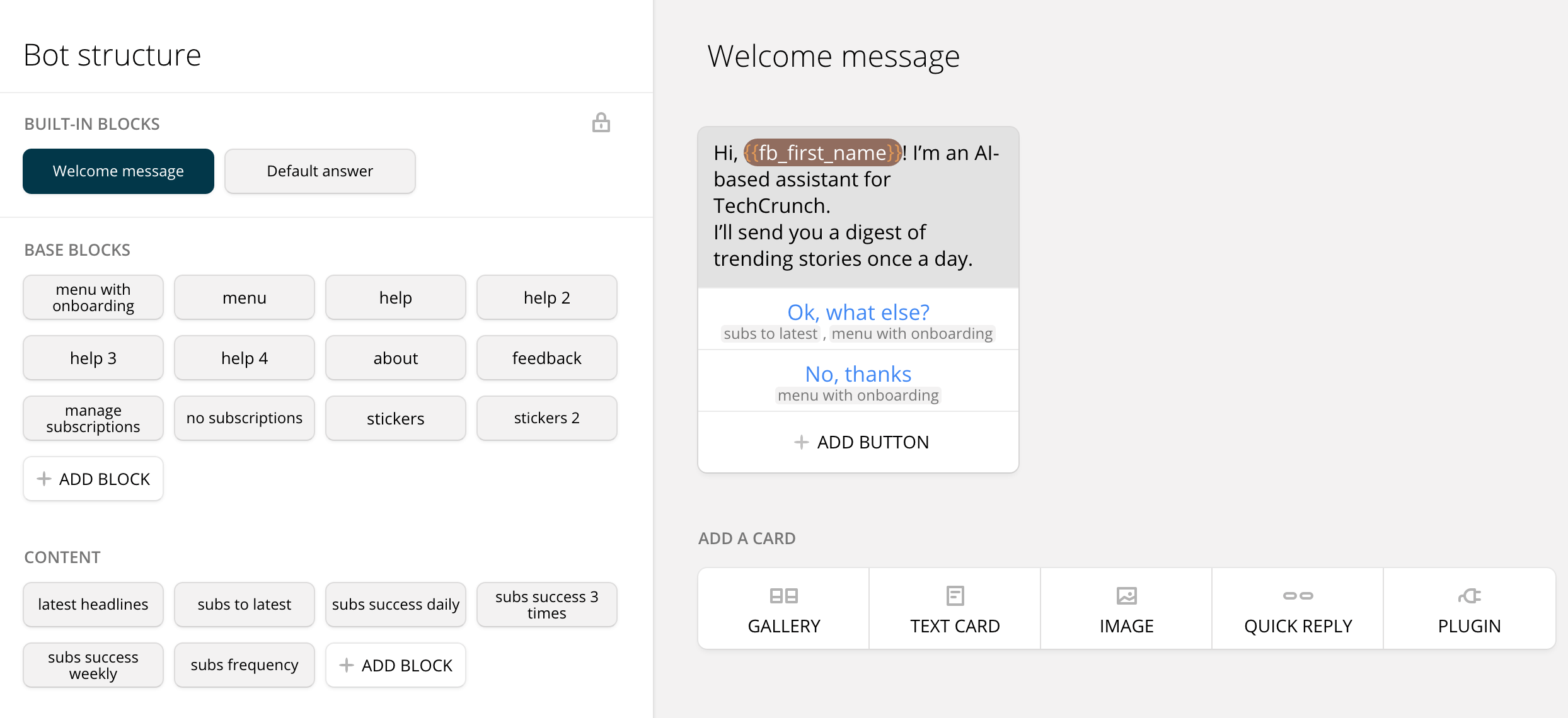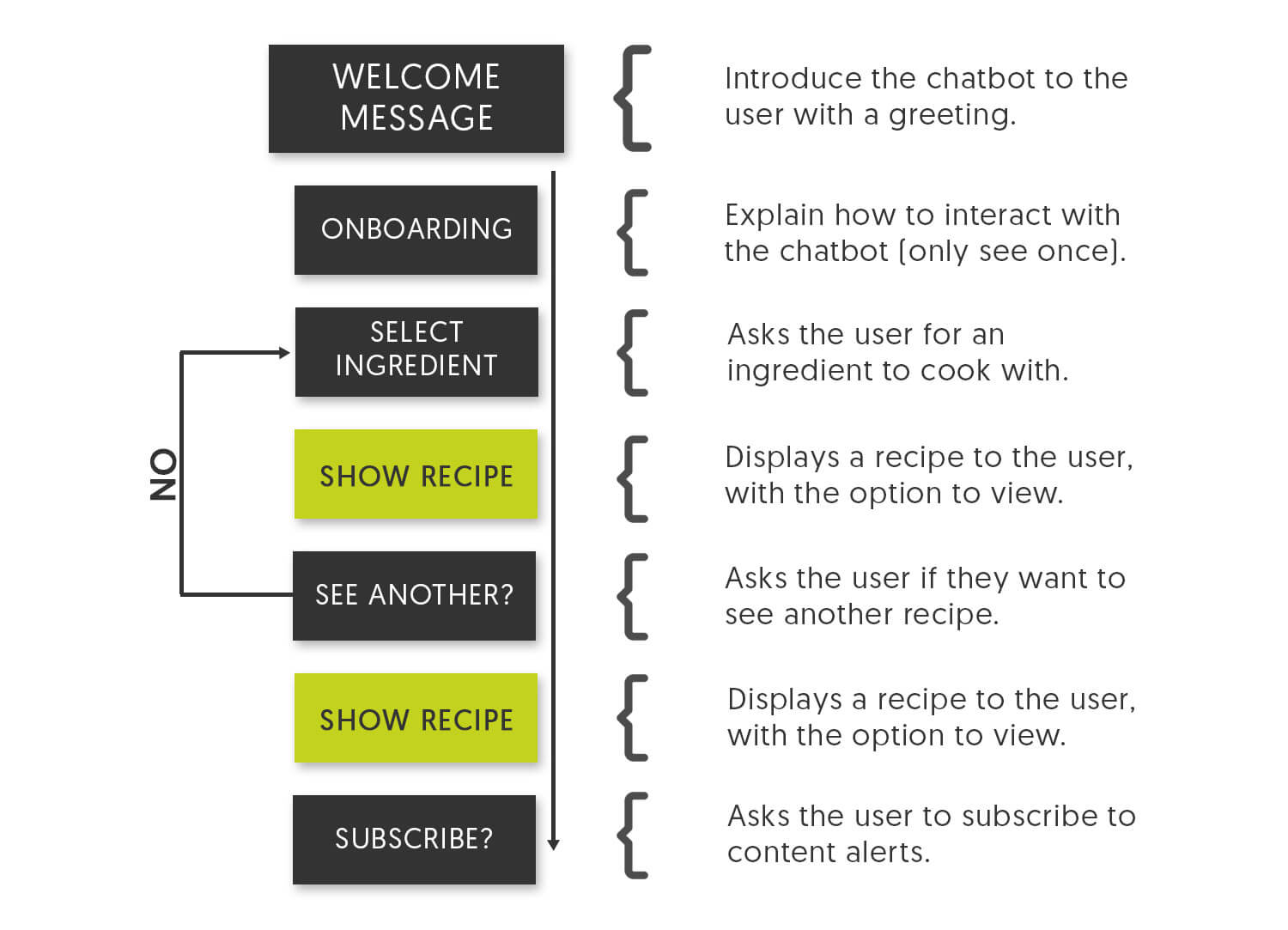Every marketing channel suffers from fatigue at one stage. Whether this is due to an increase of competition, rising costs of competing or hitting a ceiling of volume, every business will face the challenge of seeing diminishing returns on a once high-performing channel for them.
I’ve come across this challenge many times, which has made me very focused on adopting new channels that have potential at an early stage to reap the rewards. Just take video ads within Facebook as an example. We’re currently at a point where video ads are reaching their peak. Cost is still relatively low and engagement is high, but, like with most ad platforms, increased competition will drive up those prices and make it less and less viable for smaller companies (and larger ones) to invest in it.

Being an early adopter of a new channel can provide enormous benefits, but that comes with equally high risks. This is amplified within marketplaces like Amazon. Early adopters within Amazon’s marketplace were able to focus on building a solid base of reviews for their products – a primary ranking signal – which meant that they’d create huge barriers to entry for competitors (namely because they were always showing up in the search results before them).
Every marketing channel suffers from fatigue at one stage.
Whilst the payout wasn’t huge within the early days of Amazon, those who got in early are now seeing huge rewards, with 38% of shoppers starting their buying journey within Amazon (source), making it the number one retail search engine. Some studies are suggesting that Amazon is responsible for 80% of e-commerce growth for publicly traded web retailers (source).
On the other hand, early adoption can be somewhat of a curse. In 2011, many companies and individuals, myself included, invested a lot of time and money into Google+, dubbed to be bigger than Facebook at the time. They acquired over 10 million new users within the first two weeks of launch and things were looking positive. Many companies doubled-down on growing a community within the platform, hopeful of using it as a new and growing acquisition channel, but things didn’t exactly pan out that way.
Google all but killed the social network in mid-2015 leaving a lot of early adopters licking their wounds.
Life Beyond Email
For as long as I can remember, email has been a fundamentally important channel for a large majority of businesses. The ability to market products directly through a channel that scales up to an incredibly high ceiling is very attractive. The only problem is that it’s costing more and more money to acquire email addresses from potential customers, and the engagement from email is getting worse and worse.

As the above chart (source) illustrates, email click-rate has been steadily declining. Whilst open rates seem to be increasing – largely driven by mobile – the actual engagement from email is nosediving. Not only that, but it’s becoming more and more difficult to even reach someone’s email inbox; Google’s move to separate out promotional emails into their ‘promotions’ tab and increasing problems of email deliverability have been top reasons behind this.
All that said, email is still an incredibly important channel for a lot of businesses and it undoubtedly still gets results. I don’t think many people will argue that, whilst this is the case now, things are only going to get worse.
As with many ‘organic’ channels, the relative reach of your audience tends to decline over time due to a variety of factors. In email’s case, it can be the over-exposure to marketing emails and moves from email providers to filter out promotional content; with other channels it can be the platform itself. Back in 2014, I wrote about how “Facebook’s Likes Don’t Matter Anymore” in relation to the declining organic reach of Facebook pages. Last year alone the organic reach of publishers on Facebook fell by a further 52%.
The Birth of Chatbots
It’s fair to say that I’m pretty obsessed with chatbots right now. There are some great applications popping up from brands that genuinely add value to the end consumer, and early signs are showing that consumers are actually responding really well to them. For those of you who aren’t quite sure what I’m talking about, here’s a quick overview of what a chatbot is:
[information icon=”true”]A chatbot is a service powered by rules, and sometimes artificial intelligence, that you interact with via a chat interface. The service could be any number of things, ranging from functional to fun, and it could live in any major chat product (Facebook Messenger, Slack, Telegram, Text Messages, etc.). (source)[/information]

Awareness around chatbots is starting to grow, especially after Facebook came out mid-last year with their new Messenger platform that supported chatbots. On top of that, and like with a lot of things online, the adult industry has stimulated a lot of demand around chatbots.
Just take a look at some of the most searched-for keywords in the search engines related to chatbots (data from Storybase):

This is why we can’t have nice things.
That aside, there are some really great chatbots that have been built that add a bunch of value whilst also benefitting the brand commercially. One that I really like is the Politico chatbot that gives you regular digests of news whilst also serving you up relevant information that you ask for.
This is great for the consumer because they don’t need to leave the environment of Facebook to get access to the content they want, and it’s hugely beneficial to Politico, as they’re able to push on-demand content through to an increasingly engaged audience – oh, and they can also learn a bunch of interesting things about their audience in the process (I’ll get to this shortly).

There are a bunch of e-commerce stores taking advantage of chatbots as well. One example that I was playing with was from Fynd that enables you to ask for specific products and they’ll display them to you directly within Messenger. What’s more, Facebook even allows you to make payments via Messenger bots, opening up a whole world of possibility to e-commerce stores.
Bot experiences with more engaged audiences are getting 80-90% response rates.
I spoke with Dmitriy Kachin from Chatfuel, a chatbot creation platform, to see how some of their customers’ chatbots were performing in terms of read/response rates. Here’s what he had to say:
Obviously, numbers vary across the board – and better bot experiences with more engaged audiences are getting 80-90% response rates. While even the least favorable experiences are in the 35-40% range.
Why Should You Care?
Ok, so you’re probably thinking, “This all sounds great, Matt, but how can I do something with chatbots?”
Well, I’ve got you covered.
Don’t for a minute think that chatbots are some gimmick that is going to be available only to bring brands with huge audiences. Whilst there are a number of new chatbots appearing each week, the space is still in its infancy. This is the time to become an early adopter.
Why? Here are five reasons to start with (and this is just with Messenger):
- As soon as someone engages with your chatbot, you have the ability to push messages to them within Facebook Messenger with very few limitations.
- You can use input from users to dynamically segment them into groups and serve different content to them.
- You can set up automation workflows in the same way that you would via email marketing automation.
- Click-through rates and general engagement is very high at this stage. You’re more likely to get engagement within Messenger than from within your Facebook page because the communication is 1:1 and you’re not competing with others in the newsfeed.
- Facebook has opened up the ability to run ads directly to Messenger. This means that anyone that engages with your ad can now be followed up with directly within Messenger (this is incredibly exciting).

The fact that you can now run ads directly to Messenger is an enormous opportunity for any business. This skips the convoluted and leaky process of trying to acquire someone’s email address to nurture them outside of Facebook’s platform. Instead, you can retain the connection with someone inside Facebook and improve the overall conversion rates to receiving an engagement.
Don’t forget that you can also tap into platforms outside of Messenger as well, for example, Slack, Telegram and even SMS. If you’re interested in bringing a chatbot to a whole bunch of these different platforms then I’d recommend checking out Flow XO.
How Do I Create a Chatbot?
One of the biggest hurdles to overcome with being an early adopter of a platform is that it often costs a lot of money and requires highly specialized skills. That’s not the case with chatbots. You can actually go from an idea to a fully functioning chatbot within a matter of minutes, and it won’t cost you anything.
How is this possible? Chatfuel.

[information icon=”true”]Chatfuel is a platform that lets you build your own Chatbot for Messenger (and Telegram) for free. The only limit is if you pass more than 100,000 conversations per month, but for most businesses that won’t be an issue. No understanding of code is required and it has a simple drag-and-drop interface. Think Wix/Squarespace for bots (side note: I have zero affiliation with Chatfuel).[/information]
There are other platforms similar to Chatfuel at the moment, but not many. Botsify is one, but I haven’t actually used them yet.
The first thing to do when mapping out your own chatbot is to figure out what unique value it could add to the user.
One example of a chatbot that I’m testing out at the minute is a recipe recommendation bot that lives directly within Messenger. The basic way that it works will be that the user will say what ingredient (or list of a few ingredients) that they want to cook with and the chatbot will serve up relevant recipe recommendations.
It’s a simple idea but adds a ton of ongoing value to the user, and, more importantly, gives them a reason to regularly engage with the bot. This creates a bunch of opportunities to take the user down extra conversion paths – for example, purchasing ingredients, product recommendations and ongoing content subscriptions (to name a few).
When you’re thinking about designing your chatbot you should have a very clear answer to “Why would someone continue to get value from this?”
Chatfuel Basics: Blocks and Rules
The basic way that Chatfuel works is by linking “blocks” to “AI Rules”. The best way to explain this is in the same context of email automation. Think of the “blocks” as individual emails, and the “AI Rules” as your automation rules (i.e., if a user does x, send them y).
Each interaction that you plan to make with the user should be built out in an individual block. Based on the user’s input, they will receive different blocks afterwards.
Here’s a simple schematic of how a user would interact with individual “blocks” within my recipe recommendation example:

This is an extremely simplified version of the interaction flow, but it should hopefully illustrate the basic premise behind “blocks”.
The rules can be set up so that if a user responds in a certain way, they’ll be served a specific block. For example, in the flow I’ve outlined above, if a user says, “No” when asked if they want to see another recipe for the ingredient they specified, they’ll be directed back to the “Select Ingredient” block.
You can also create some rules based on keywords. For example, if a user types the words “manage subscription”, you could send them to a block that asks them if they’d like to reduce the amount of messages they receive. This is one of many examples.

In my recipe recommendation example, if a user types “salmon recipes” they’ll be served up a selection of recipes that include salmon. This can be pulled in dynamically via the RSS plugin within Chatfuel.
The plugin aspect to Chatfuel is one of the real bonuses. You can link up to all sorts of different services to add richer content to the conversations that you’re having. This includes linking up to Twitter, Instagram and YouTube, as well as being able to request that the user share their location, serve video and audio content, and build out custom attributes that can be used to segment users based on their inputs. This last part is a killer feature.
My advice here is to go in and create a free account with Chatfuel and just start playing around. They have a really useful “Test This Chatbot” feature that pings you a message in Messenger to start engaging with your bot in development mode so that you can test it out and improve it before going live.
Using Chatbots to Grow Your Funnel
Once you’ve started to get some engagement with your chatbot, you can start experimenting with a bunch of different ways to use it as an acquisition channel.
During my conversation with Dmitriy Kachin from Chatfuel, I asked him for some tips on getting the best possible results from broadcast messages. From analyzing Chatfuel’s customer data, Dmitriy came back with the following:
The overall quality of the content and its relevance to the audience the bot owner is reaching out to.
Giving people a clear and precise expectation of what you will be sending, how often, and offering them the opportunity to choose whether they want to receive this type of content and how frequently. Give the users as much control as possible.
Personalizing the content as much as possible – making use of FB’s default user attributes (addressing users by name), using the segmentation features of the platform to learn as much as possible about the audience and offering specific groups of people only the type of content that is relevant to their needs, interests and choices.
Being mindful not to abuse the power of broadcasting (no more than 2 broadcast messages per day typically); otherwise, people start getting annoyed with the volume of messages and tend to unsubscribe, or mute the bot.
Final Thoughts
If you’re a subscriber to my email list or a regular follower of my blog then you’ll likely hear me talking a lot about chatbots over the coming months. I’ve personally been testing them out a lot and plan to do a whole lot more – some of you will have received used my chatbot as part of my ‘free SEO consultation’ campaign.
Ultimately, only time will tell how effective the likes of Facebook Messenger will become in the long term. As more and more companies look to use chatbots within the platform, the greater the frequency of messages that individual users will receive. This could result in Facebook (and other messaging platforms) placing stricter restrictions on usage, but until then I’d recommend testing as much as possible.
If you’re running a chatbot that’s seen some success, I’d love to hear from you in the comments below.
